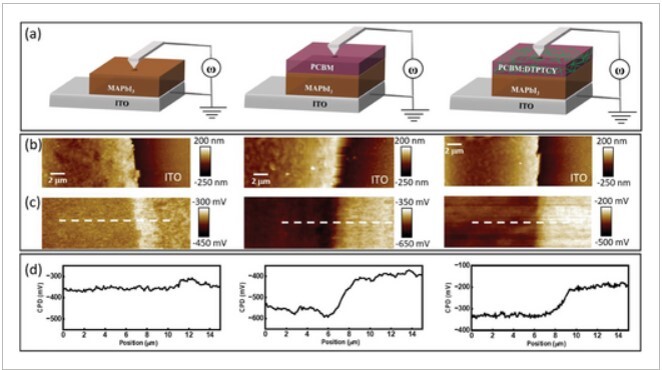


Adv. Funct. Mater.2024,34, 2312819
The passivation of perovskite interfacial defects by the electron transport layer (ETL) has emerged as an effective strategy for enhancing the performance of perovskite solar cells (PSCs). Dithieno[2,3-d:2′,3′-d′]thieno[3,2-b:3′,2′-b′]dipyrrole (DTPT)-based acceptor-donor-acceptor (A–D–A) molecules composed of coplanar heteroacene as electron-donating core end-capped with various electron-accepting moieties are designed and examined as ETL modifiers for PSCs. Employing PCBM:DTPTCY as the ETL results in passivation perovskite defects, facilitation energy alignment at the ETL/perovskite interface, and enhancement of carrier transport efficiency. The optimized blended ETL-based Cs0.18FA0.82Pb(I0.8Br0.2)3 p-i-n PSC exhibit performances of 37.2% and 39.9% under TL84 and 3000K LED (1000 lux), respectively. The DTPTCY-based device demonstrates remarkable stability, retaining 87% of its initial power conversion efficiency (PCE) after 30 days of storage in a 40% relative humidity (RH) ambient air environment without any encapsulation, surpassing the control device, which retains only 67% of its original PCE. These findings underscore the potential of A–D–A-type molecule-based interface modification to enhance passivation and contact properties, ultimately leading to high-efficiency and stable PSCs.